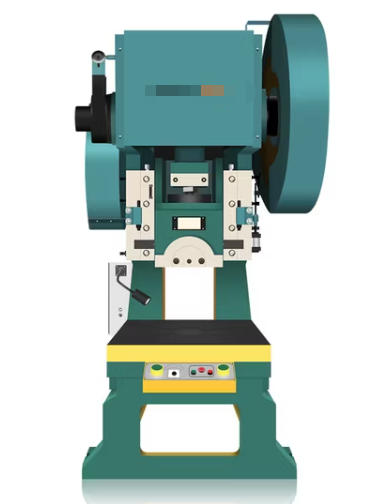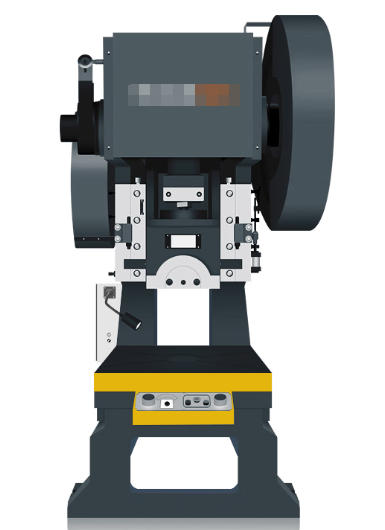Views: 222 Author: Rebecca Publish Time: 2025-11-15 Origin: Site









Content Menu
● The Centrality of Punch Presses in Cutlery Production
● Exploring Machine Types and Their Suitability
>> Servo-Electric Punch Presses
● Key Features and Specifications
● Technical Parameters and Industry Standards
● Workflow: Step-by-Step Factory Operations
>> Sheet Feeding and Alignment
>> Punching, Cutting, and Forming
>> Secondary Tasks and Decorative Processes
>> Quality Control and Data Tracking
● Practical Considerations for Factory Managers
● Advanced Features and Customization
● Energy Efficiency and Environmental Impact
● Innovations in Punch Press Technology
● FAQs
>> 1. What is the ideal tonnage for cutlery press machines?
>> 2. How do CNC punch presses benefit high-volume production?
>> 3. Can hydraulic presses handle complex cutlery designs?
>> 4. How do factories ensure quality during high-speed production?
>> 5. Which brands lead in cutlery punch press manufacturing?
Punch press machines play a pivotal role in high-volume cutlery manufacturing. With advances in automation and precision engineering, modern presses enable manufacturers to routinely deliver spoons, forks, knives, and specialty flatware at industrial scales. This article comprehensively explores machine technology, operational workflow, core features, and best practices for selecting the optimal punch press solution.

Efficient cutlery manufacturing demands exceptional speed, uniformity, and adaptability. Historically, manual and semi-automatic processes limited throughput and risked inconsistency. Modern punch press systems—whether mechanical, hydraulic, CNC, or servo-driven—solve these limitations. Automated presses allow for thousands of consistent, clean cycles per shift while maximizing operational safety and minimizing resource consumption.
Automated presses with PLC or CNC interfaces standardize procedures such as blanking and forming, deliver rapid tool changeover, and guarantee tolerances at industrial scale. These machines are the backbone of mass-market cutlery, from unbranded utility lines to high-end custom finishes.
Mechanical presses harness flywheel energy, gears, and clutches to deliver rapid, uniform force ideal for cutting, blanking, or shallow forming. Their robust construction caters to continuous production—making them prevalent in stamping standard cutlery profiles with swift cycles. Although less flexible than CNC models, mechanical presses are cost-effective for dedicated tasks and ensure durable performance.
Hydraulic presses excel in deep drawing, complex forming, and precision trimming. Unlike mechanical variants, hydraulic presses offer fully adjustable force and stroke, critical for manufacturing thicker or harder materials such as stainless steel or specialty alloys. The four-column design often supports multi-tasking and can be integrated with feeders for automated batch operations.
Pneumatic models offer moderate force and are typically applied in manual or semi-automated environments. They provide a quiet working environment and cost-efficient operation for smaller batch requirements or delicate finishing tasks.
CNC turret presses feature computer numerical control technology for high precision and flexibility. With dozens of tool stations in a rotating turret, these machines can switch punching, forming, or embossing tools rapidly. They empower factories to produce intricate designs (such as branded handles or decorative cutouts) with minimal setup time.
Servo-electric machines deploy advanced electronics for pinpoint accuracy and reduced operational noise. Their energy-saving capabilities are key for environmentally-conscious manufacturers seeking high yields with low operating costs. Servo presses are ideal for thinner metals and high-mix production environments where precision is paramount.
Heavy-duty steel frames stabilize the machinery against vibration and wear during high-frequency operation. Large, reinforced worktables accommodate sizable sheets for multi-die setups—enabling simultaneous fabrication of multiple cutlery items per cycle.
Digital interfaces grant operators real-time control over stroke rate, force, and safety interlocks. Advanced presses may incorporate remote diagnostics, touchscreens, or PLC-based programming for custom run profiles, error detection, and fast maintenance alerts.
Precision-engineered punches and dies yield consistent shape and dimension for each cutlery piece. Advanced machines offer multi-die adaptability, supporting complex manufacturing where forks, knives, and spoons require distinct forming operations in series.
- Stroke rates can reach up to 1,700 cycles per minute for mechanical presses and 1,200 for high-spec hydraulic models, supporting output scaling for exporters and OEM factories.
- CNC and servo-electric presses achieve fine tolerances (as low as ±0.01 mm) across high-speed runs, vital for premium cutlery standards.
- Hydraulic and turret presses allow for force customizations, typically ranging from 16 to 700 tons, to accommodate various sheet thicknesses and alloy compositions.
The latest punch presses integrate robotic feeders, stacking arms, and sensor-driven quality control to sustain automated, 24/7 production cycles. They interface seamlessly with enterprise resource planning (ERP) systems for performance tracking, maintenance scheduling, and real-time analytics.
Punch presses come with defined technical specifications central to machine selection for cutlery manufacturing:
- Tonnage: The force exerted by the press ram, typically measured in tons. Common ranges for cutlery manufacturing are 16–100 tons for flatware and up to 700 tons for heavy-duty pot or pan drawing.
- Stroke Length: The distance traveled by the ram; adjustable in advanced presses for variable profile depths.
- Worktable Dimensions: Dictate maximum sheet or coil size; large tables aid in batch processing.
- Speed (Strokes per Minute): High-speed presses are essential to maximize output for export-grade factories.
- Power Consumption: Measured in kW; servo and hydraulic presses are optimized for lower operational costs.
- Tooling and Die Configurations: Multi-station turrets and quick-change tooling reduce downtime and adapt to diverse product lines.
- Machine Weight and Footprint: Influences factory layout, stability, and installation considerations.
Industry standards and certifications dictate compliance requirements. Reputable manufacturers adhere to ISO, CE, and other regulatory benchmarks for machinery design, safety, and efficiency, ensuring reliability and trust with global clients.

Raw steel or alloy sheets are fed into the press (often via automated conveyors) and precisely aligned using rollers and alignment sensors. Automated feeders can load, position, and index sheets or coils while minimizing operator intervention and error.
Machines execute programmed cycles to blank, cut, and form all major contours. This includes forging the bowl, shaft, and handle of flatware or drawing deep forms for ladles and specialty kitchen items. Advanced presses may switch dies mid-cycle for serial multi-forming operations.
After primary shaping, multi-operation presses or configured secondary stations emboss brand logos, punch holes for decorative or ergonomic finishes, and coin the edges to create safe, comfortable grips. Robotic arms or stackers collect finished blanks and transfer them for polishing, edge finishing, or further assembly.
Digital control systems track each cycle's parameters (force, speed, stroke count, deviation), serving as a basis for real-time QA. High-resolution sensors or camera systems inspect dimensions, surface finish, and punch integrity, flagging aberrations for rework or maintenance.
Selecting the ideal punch press for high-volume cutlery manufacturing requires evaluating both technical and practical dimensions:
- Capacity Planning: Assess output targets, material variety (stainless steel, aluminum, special alloys), and cycle speed.
- Automation Integration: Determine the level of desired automation—fully robotic lines, hybrid human-machine collaboration, or semi-automated workflow.
- Tooling Investment: High-mix production environments benefit from CNC turret or quick-change die systems; standard runs may leverage dedicated single-task mechanical presses.
- Maintenance and Service: Prefer presses with accessible parts, remote diagnostics, and partnered local or global service teams.
Modern punch press manufacturers offer extensive customization, ensuring machine performance aligns with each factory's targets:
- Automatic feeders, error detection, and pre-breaking devices to minimize sheet loss and increase efficiency.
- Custom die configurations for unique handle or bowl shapes, including vibrate, high-grade, low-grade, long-handled, and short-handled cutlery.
- Modular platforms allow for rapid upgrades, technical support, and turnkey projects, supporting expanding factories as market demands fluctuate.
Cutlery presses increasingly feature memory programs for recurring batches, enabling branded manufacturers to recall specific settings for consistency across product lines and orders.
Environmental responsibility is a key concern for modern manufacturers. Servo-electric presses greatly reduce energy consumption and noise levels compared to traditional hydraulic or mechanical models. Factories adopting green machinery often achieve significant reductions in cost, resource usage, and environmental footprint.
Additionally, advanced lubrication systems, precise stroke adjustment, and intelligent cooling further minimize wear, energy expenditure, and production waste.
Large-scale factories in Asia, Europe, and North America leverage the full suite of advanced punch press technologies:
- Fully automated lines running 24/7—capable of producing up to 6,000 pieces per hour—drive export operations for global brands.
- Integrated lines simultaneously blank, form, trim, emboss, and stack, with minimal human intervention except for QA supervision.
- Specialty presses enable factories to shift rapidly between product lines (e.g., utility spoons, dessert forks, steak knives), maximizing SKU depth without the high downtime historically associated with manual die changes.
Recent innovations continue to reshape the landscape for cutlery manufacturers:
- Infinite stroke control in modern punch presses ensures that both downstroke and upstroke can be finely tuned for different materials and processes, dramatically improving forming accuracy.
- Automation enhancements allow presses to detect feeding errors, adjust for sheet thickness variances, and compensate for production speed changes—all increasing overall yield and reducing scrap rates.
- Integrated data interfaces enable production managers to analyze cycle data, proactively maintain machinery, and optimize production scheduling.
Several manufacturers stand out for high-volume cutlery punch press innovation:
- Youngmax: Specializes in four-column hydraulic presses for multi-hole and deep-draw jobs.
- HaoHan: CNC turret presses for speed and customizability.
- Accurl: Known for servo-driven presses and reliable AC drive systems.
- Chin Fong, PRIMA POWER, and TRUMPF: Globally recognized for robust, energy-smart, and precision-driven machinery catering to both mass-market and luxury cutlery production.
Routine maintenance is vital for ensuring uptime and accuracy. Automated diagnostic routines and modular designs allow manufacturers to replace wear parts swiftly. Safety systems—such as built-in overload protection, guided hand/foot switch operations, and emergency shut-offs—reduce accident risks and extend press lifespan.
Maintenance teams should regularly inspect slide strokes, motor and drive systems, lubrication channels, and die integrity to ensure clean, consistent cutlery output and prevent unplanned shutdowns.
Technological advancements in punch press machines have revolutionized high-volume cutlery manufacturing, driving productivity, lowering costs, and raising the bar for product consistency and design flexibility. Modern presses—mechanical, hydraulic, CNC, servo-electric—empower cutlery producers to meet the ever-increasing demands of the global market while pursuing operational sustainability, safety, and quality excellence. By selecting and implementing the right punch press solution, factories can stay competitive, agile, and prepared for future industry evolutions.

Cutlery manufacturing usually requires 16–100 tons for flatware and up to 700 tons for heavy-duty products, depending on material thickness and complexity.
CNC presses automate tool changes, streamline workflows, and ensure precision, so producers can switch quickly between designs and keep downtime minimal.
Hydraulic presses can perform deep drawing, trimming, and intricate embossing, delivering consistent thickness and fine details for advanced shapes.
Modern presses use sensors, cycle counters, and digital controls to inspect each run, flagging deviations for rework and prompt maintenance.
Global leaders include Youngmax, Accurl, Chin Fong, PRIMA POWER, and TRUMPF, serving factories from small workshops to large automated lines.
Why The Right Punch Press Machine Is Crucial for High-Quality Tableware Production?
Punch Press Machines: The Backbone of Efficient Cutlery Production
How To Choose Between Manual And Automatic Punch Press Machines?
Best Punch Press Machines for Small And Large-Scale Manufacturers
Top Manufacturers of Punch Press Machines for The Tableware Industry
What Are The Key Benefits of Investing in A Punch Press Machine for Your Factory?
How Punch Press Machines Are Revolutionizing The Cutlery Industry?
The Role of Punch Press Machines in Modern Kitchenware Production Lines
Punch Press Machine Vs. Turret Punch Press: What's The Difference?
